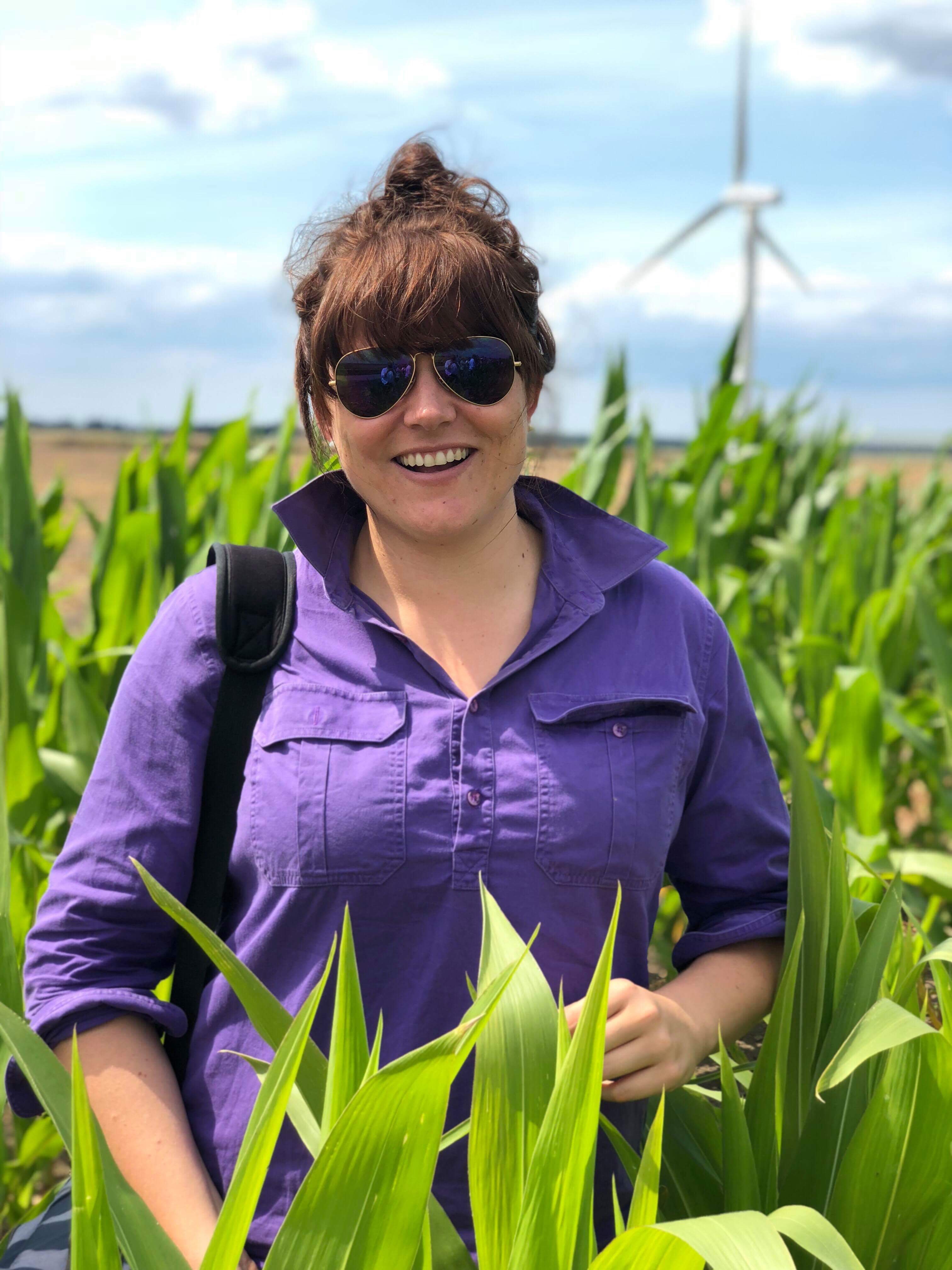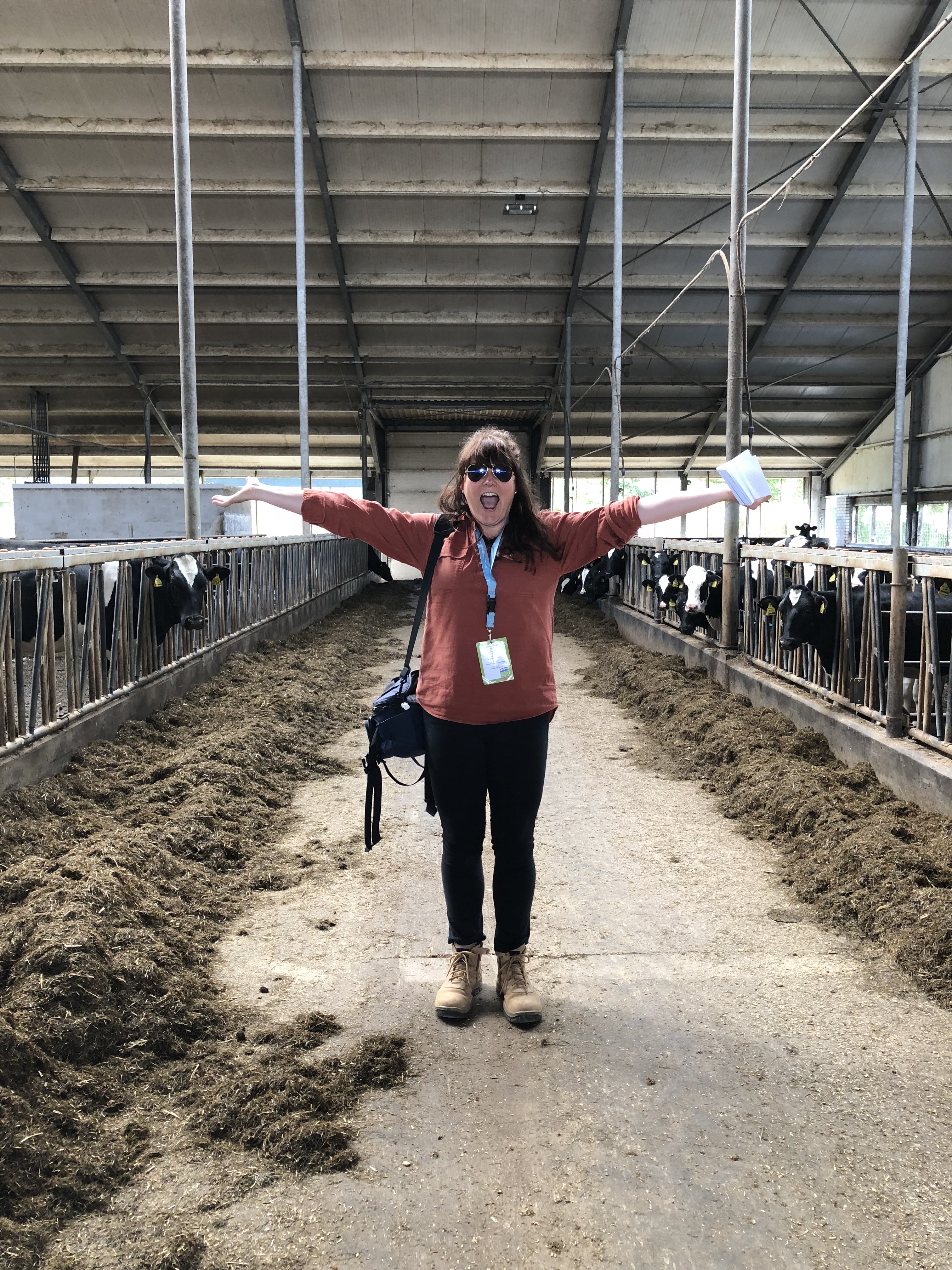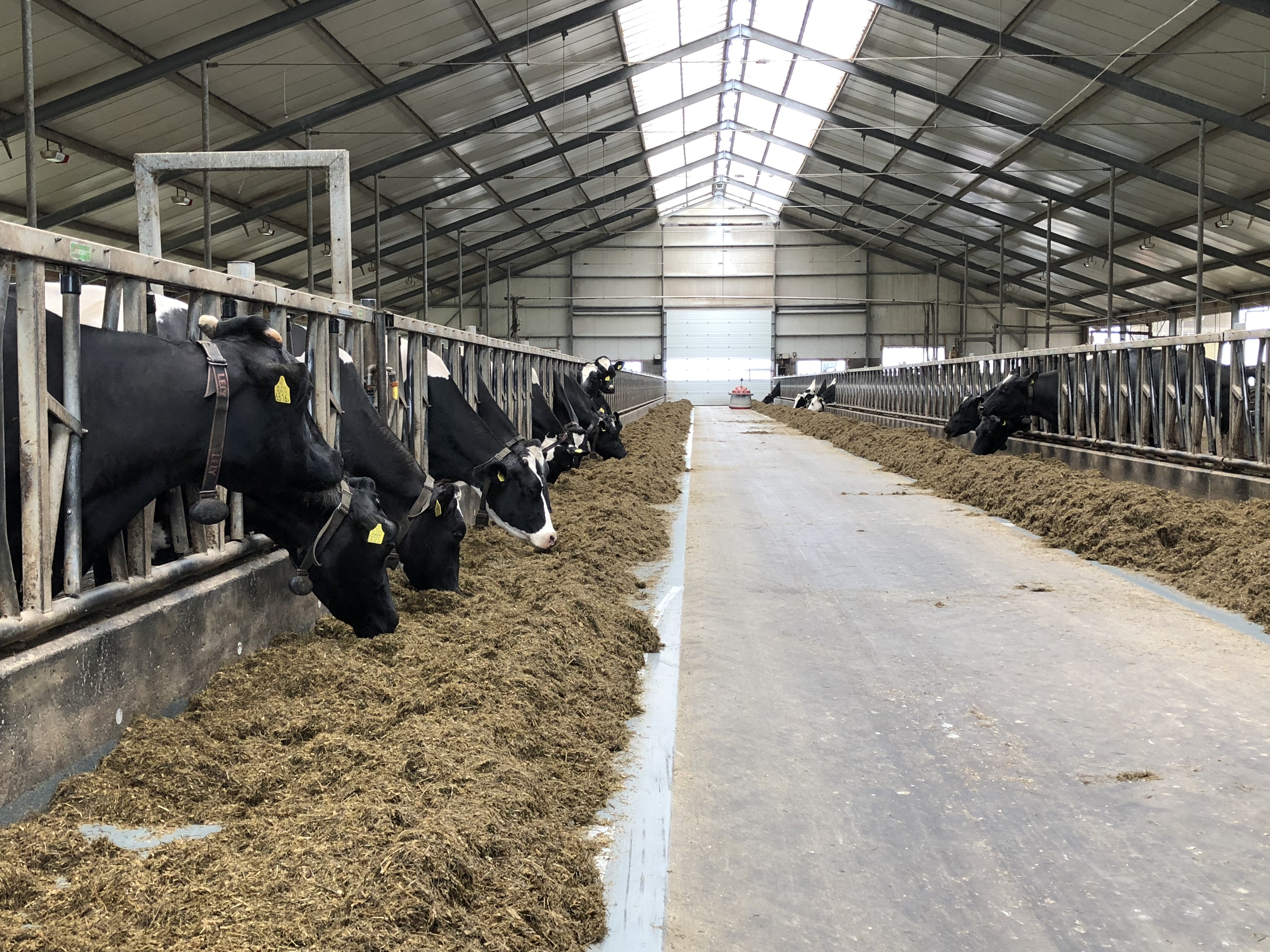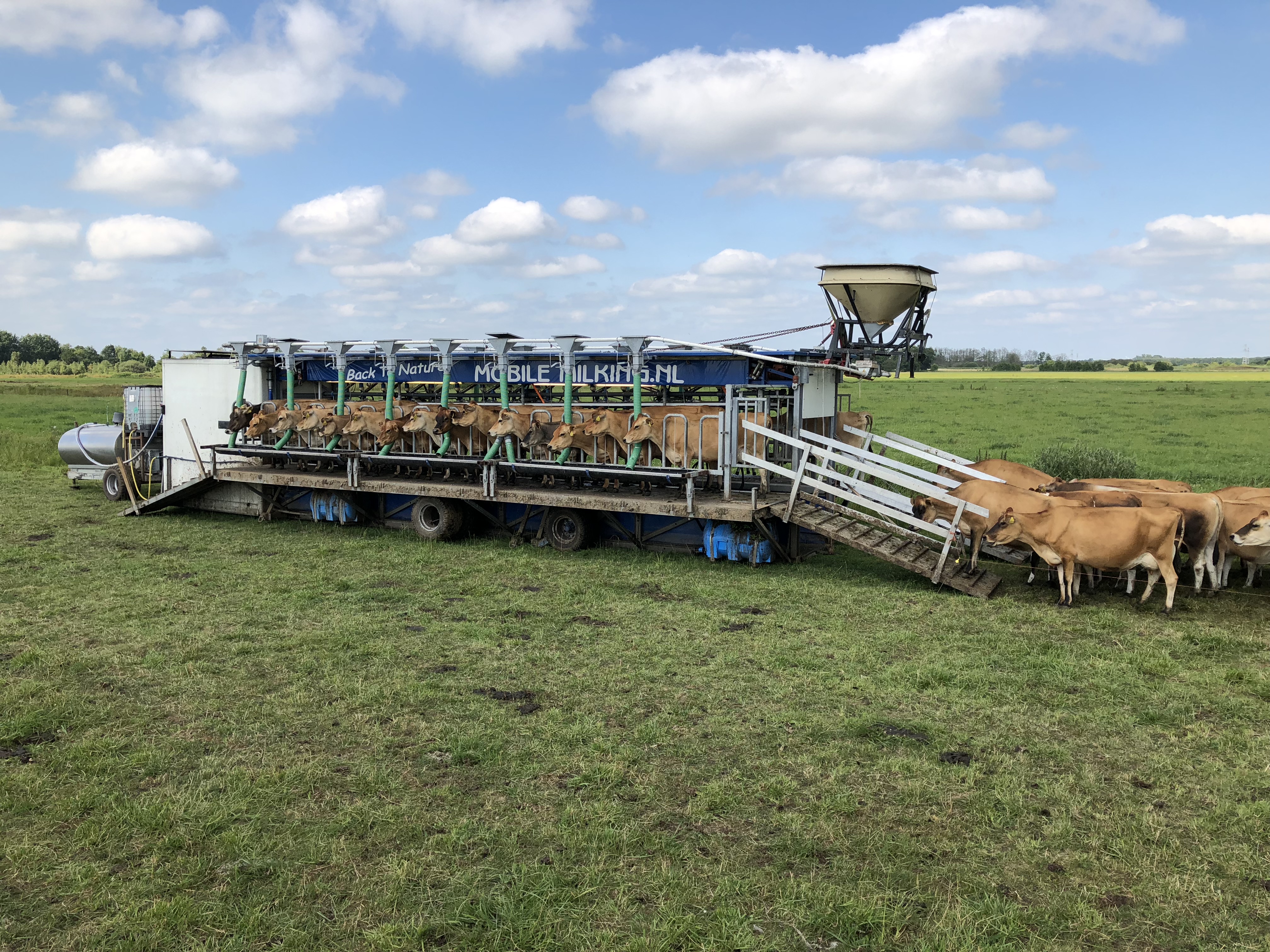Cream of the crop embraces IFAJ experience
Victorian journalist Simone Smith won this year’s ACAJ Star Prize for Excellence in Print Reporting, and packed her bags for the 2018 IFAJ Congress in The Netherlands as part of her prize. Here, she shares some of her experiences:
There is nothing like travel to provide perspective.
There are so many sayings dedicated to this wise advice, but they do not resonate until you experience it yourself.
Perspective is what I needed and the International Federation of Agricultural Journalists’ congress in The Netherlands delivered in spades….including the first time I laid eyes on a cow jacuzzi- but more on that later.
From the start I was star-struck with the Australian reporters who I’d only ever seen on television, followed on social media or read their stories. Not to mention the international journalists, who, again, I followed on social media, intrigued by the issues they cover and how they do their jobs.
On top of this, many of my international colleagues hadn’t heard of The Weekly Times (where I work) and a few were surprised there was enough work in Australia for a full-time dairy journalist. I was gobsmacked.
To set the scene, the past two and a half years have been a blur. It started with the “dairy crisis” where farmer incomes where slashed by two of the largest milk factories Murray Goulburn and Fonterra and instability suddenly became the order of things.
The destabilisation of the industry included court cases, Government inquiries, takeover battles, milk moving from processor to processor, low prices, bankruptcies, herd dispersals and talk of the introduction of a mandatory code of conduct.
Reporting on these ructions in the sector – an industry I’ve been involved in my entire life – it felt like I hadn’t come up for air. My work had been a never-ending treadmill of dairy industry woe. So to hear international journalists refer to Australia as a “beef nation” or ask about the crops, I was a little perplexed. What about dairy?
I’m not so naïve to think Australia is a big-hitter in the world of dairy. It sits behind the EU, New Zealand the US in terms of export volumes. But I was surprised by people’s reactions. This offered an amazing opportunity to learn from others. I spent a lot of time with reporters who not only covered dairy in some of the largest production countries, but had years of experience.
Bus trips, dinner and drinks were all opportunities to pick-the-brains of colleagues. How did they manage their time? How did they cope interviewing people about emotional subjects? There were so many questions and I hadn’t even touched on the issues impacting agriculture.
On-farm it was a similar experience. The Netherlands was in drought. When we toured farms, it had not rained for five weeks. This caused a few raised eyebrows from Australian colleagues from NSW and Queensland – and rightly so- but hailing from the south west of Victoria, I could relate.
We have “green droughts” like the Dutch. The ground becomes cracked, milk production plummets – first components and then volumes – and fodder storages deplete. In my part of the world this year, we didn’t get a break until late in autumn. Pastures struggled to establish and there was limited feed ahead of calved cows. In Holland, the hot conditions were biting farmers in the summer. Silage bunkers were only third full. Some farmers were on the brink of tough decisions about feeding cows, as they were going into winter with limited stored fodder. An impossible task. I couldn’t help but wonder what a decline in European production might mean for world prices? Unfortunately, in agriculture, someone else’s loss is inevitably another’s gain. It will be interesting to see how this plays out for Aussie farmers.
But while there were a few similarities between Dutch and Victorian dairy farming, the differences were striking. Apart from the obvious barn and cut-and-carry type system, the reference to 16-year-old milking robots as “old fashioned” (no farmer in Australia with robots would be considered “old fashioned”), year-round calving and the lack of Friesian-Jersey-cross animals, it was a laneway on one farm that caught my attention.
It was concrete. We were down the back paddock of a Friesland dairy farm. This may seem minor, but I couldn’t, for the life of me, think of a dairy farm laneway in Australia which was concreted at the furthest point from the dairy. Concrete is commonplace close to a dairy, but never down the paddock. It was just another sign of the difference in farming scale. Concreting laneways on Aussie dairy farms would cost a mint.
Speaking to Dutch farmers, I fear their concerns could be our future challenges.
The most striking was the phosphate rights. Implemented at the start of the year, it’s a plan to limit the amount of phosphate production via manure from the dairy industry for environmental benefits. Each farm was awarded phosphate rights for the equivalent of the amount of cattle it had in 2015.
 We visited one business milking cows in excess of its phosphate rights. Even though the manager knew he was risking huge fines, he couldn’t justify the cost of purchasing extra quota- up to 10,000 euro a cow ($A15,700). But like many farms around the world, this business had huge overhead (or fixed) costs- a result of expanding when EU milk quotas were removed three years ago. The business needed the cash-flow from milking the extra cows to make ends meet. Victorian dairy farmers do not have the dilemma of phosphate rights, but many have high fixed costs. Some opt for the “dilution is the solution” business proposition, like the farm we visited in the Netherlands, while others cut costs in areas of their business which do not impact production. For example, labour or repairs and maintenance. This Dutch farm had a really tough decision. Similar scenes have played out in Australia, just the financial stress trigger was different.
We visited one business milking cows in excess of its phosphate rights. Even though the manager knew he was risking huge fines, he couldn’t justify the cost of purchasing extra quota- up to 10,000 euro a cow ($A15,700). But like many farms around the world, this business had huge overhead (or fixed) costs- a result of expanding when EU milk quotas were removed three years ago. The business needed the cash-flow from milking the extra cows to make ends meet. Victorian dairy farmers do not have the dilemma of phosphate rights, but many have high fixed costs. Some opt for the “dilution is the solution” business proposition, like the farm we visited in the Netherlands, while others cut costs in areas of their business which do not impact production. For example, labour or repairs and maintenance. This Dutch farm had a really tough decision. Similar scenes have played out in Australia, just the financial stress trigger was different.
Equally, Australia shares many innovative dairy farmers just like the Dutch family supplying fast-food restaurant McDonalds with milk from their “happy cows”. These cows moved freely between the barn and an outdoor grazing area. The outdoor area included a cow “Jacuzzi”. This apparently helped make the cows happy. It was a dam, with easy access on one side. All I could think about was “in-milk cows standing in water? What about the mastitis risks?” but apparently there weren’t any. I digress. Another example is the farmer who produces organic milk, uses chooks to renovate pastures and milks his cows in a mobile dairy down the paddock. But that’s another story.
The trip reminded me about why I do my job. It is best avenue to meet some of agriculture’s most innovative people and an opportunity to learn something new every day. Now that’s perspective.
More information: Simone Smith, Dairy Writer, The Weekly Times, simone.smith@news.com.au
